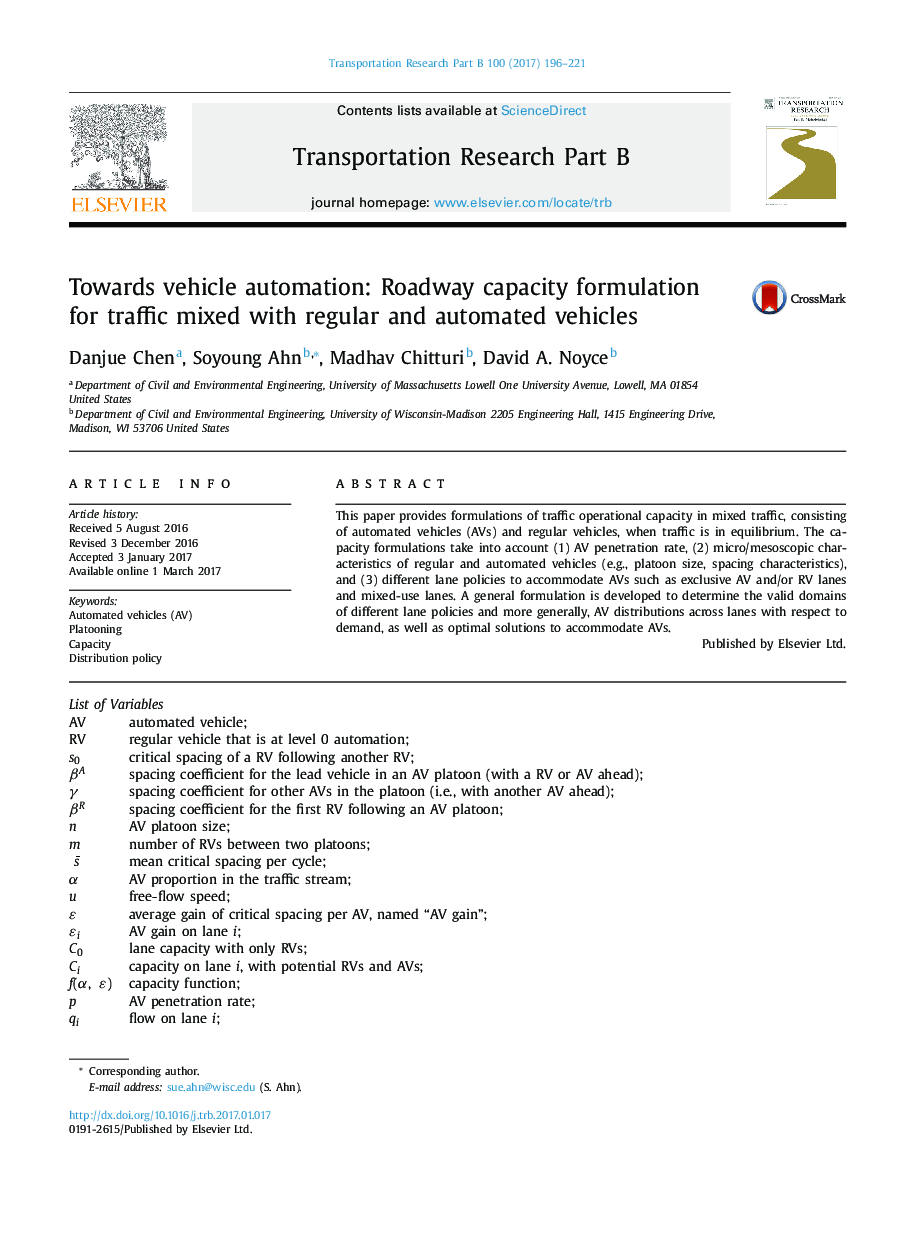| Article ID | Journal | Published Year | Pages | File Type |
|---|---|---|---|---|
| 5127038 | Transportation Research Part B: Methodological | 2017 | 26 Pages |
•Capacity of traffic mixed with regular and automated vehicles is formulated based on vehicle spacing characteristics, platoon size, and AV penetration rate.•Capacities under different lane policies, such as exclusive automated and/or regular vehicle lanes and mixed-use lanes, are examined.•A general formulation is developed to examine feasible lane policies and valid domains of lane distributions of automated vehicles for various levels of demand.•As demand increases, feasible domains of lane distributions of automated vehicles shrink and eventually converge to a unique solution or a contour line.•To achieve the highest capacity, automated vehicles should fully use the most efficient lane(s) first then move to the less efficient lanes.
This paper provides formulations of traffic operational capacity in mixed traffic, consisting of automated vehicles (AVs) and regular vehicles, when traffic is in equilibrium. The capacity formulations take into account (1) AV penetration rate, (2) micro/mesoscopic characteristics of regular and automated vehicles (e.g., platoon size, spacing characteristics), and (3) different lane policies to accommodate AVs such as exclusive AV and/or RV lanes and mixed-use lanes. A general formulation is developed to determine the valid domains of different lane policies and more generally, AV distributions across lanes with respect to demand, as well as optimal solutions to accommodate AVs.
